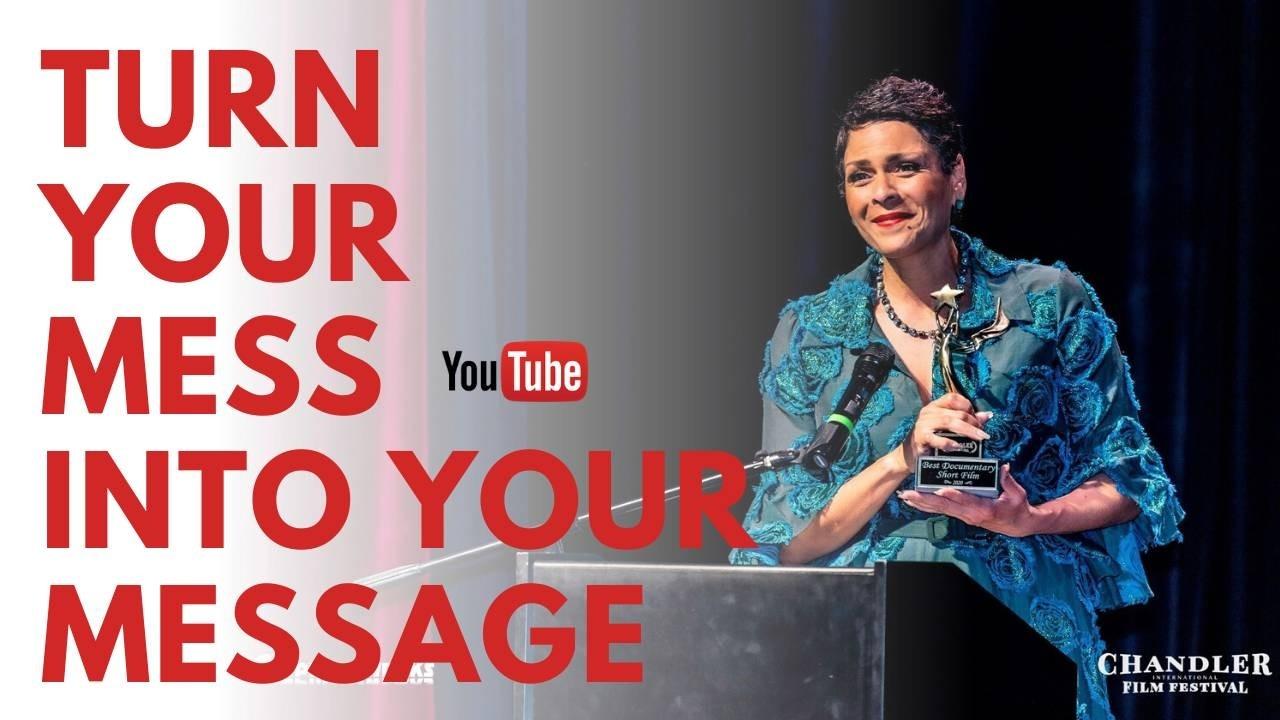How to tell your personal story (TURN MESS INTO MESSAGE)

You might've heard somewhere along the way say “turn your mess into your message” or your “pain into your purpose” or your “trial into your triumph”. They were referring to that in storytelling. And you might be saying to yourself, “well then how do I do that? I'm not so sure even how I turn my mess into my message and tell my story?” If you're in business, it's really important that you weave in elements of your story so that you can attract clients and customers. So how do you tell your story? How do you turn your mess into your message?
Take risks with your storytelling
You really do need to share the ins and outs, the good, the bad, and the ugly when you are telling a story. And the reason why is because none of us are perfect. The more relatable you can be whether on stage, in an interview or writing copy for your next blog post or marketing material the more real you can be, the more mess you can share, the more someone else sitting across the room listening to you can say, "Oh, she's not perfect. She's just like me. She's been there too. She gets it." There's something to be said about you taking a risk and sharing it, sharing your vulnerability and letting people know, "Hey, this is what I've been through too but you too can get over it.” What happens is that people see themselves in your story. But if you haven't taken them there, if you haven't given yourself permission to expose the things that people can absolutely relate to, there's no relate-ability.
So take risks, allow yourself to share your mess and let that turn into your message as part of the way that you share your story.
Don't tell it...show it
You want to paint pictures with your words now. You want to be as descriptive as you possibly can so that you are bringing people into the story and a point in time where they are visualizing what it is that you're saying, and they're not just listening to it. Here, I'll give you an example. I can remember one point in my life when things were really rough and I didn't think I was going to make it through. I felt awful about what was going on and I couldn't do anything about it. That's me telling you that. But if I were to show it to you, if I were to paint a picture, I would probably describe it this way.
"There was one night when I could not get myself up off the floor. In fact, I cried so much that my dark hardwood floor had a gray stain on it from the tears, I felt like my stomach was in knots and my fingers hurt so bad from clenching because I was just so angry about what my life had come to and what I was being made to feel like. I felt like this awful pent up victim."
So there’s a difference there. Right? I could go on, I could paint it even further, but I'm really hoping to paint for you an example of why it's so important when you are telling your story that you are painting a clear picture in the minds of people so that they visualize it as they're listening to it. You show them and not just tell them.
Engage the listener
And there are lots of ways that you can engage listeners, but the more that you engage the listener, when you are telling your story, the more that your story is incorporated for them, which means that they can make meaning of it. And some ways that you can engage a listener is simply by asking them a question. Even when I'm giving a speech in front of a large audience, I will stop and ask the audience a question and literally raise my hand and say, you know, "does this relate to you? Do you, are you feeling exactly what it is that I'm feeling? Have you been through this before?" You get the listener to not only identify it with a yes or no, but they also put their hand up so that they are physically being engaged in the part of the story that you are delivering. If this is onstage and you want to find a way where you can have the audience, do something physically to be engaged with your story. It could be that you ask them to stand up or shake a hand or to change seats with someone. There's so many ways that you can engage the listener. But when you find ways to do that people remember you.
You have to find ways to make yourself memorable. Engaging your listener is just one of the ways.
If you want to find out more ways that you can not only engage your listener, not only find ways to paint pictures with your words, and of course, turn your mess into your message or better yet find ways to take risks in your storytelling then I've got a free training for you.
All you need to do is to go to darieth.com/speakermarketing and register.
I also take your questions live! This training will be of use for you, particularly if you are serious about telling a powerful story and finding ways to market yourself as a speaker.


